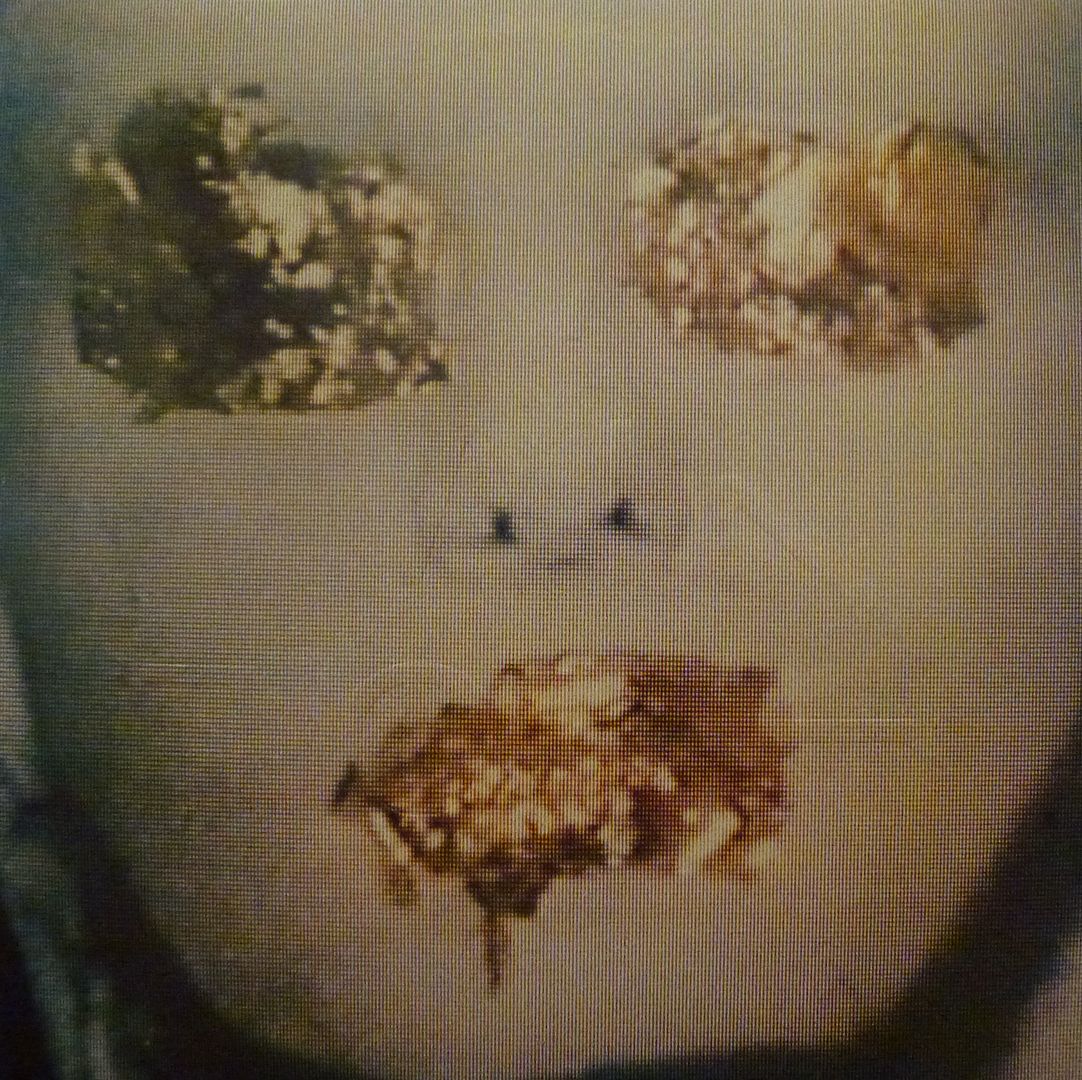
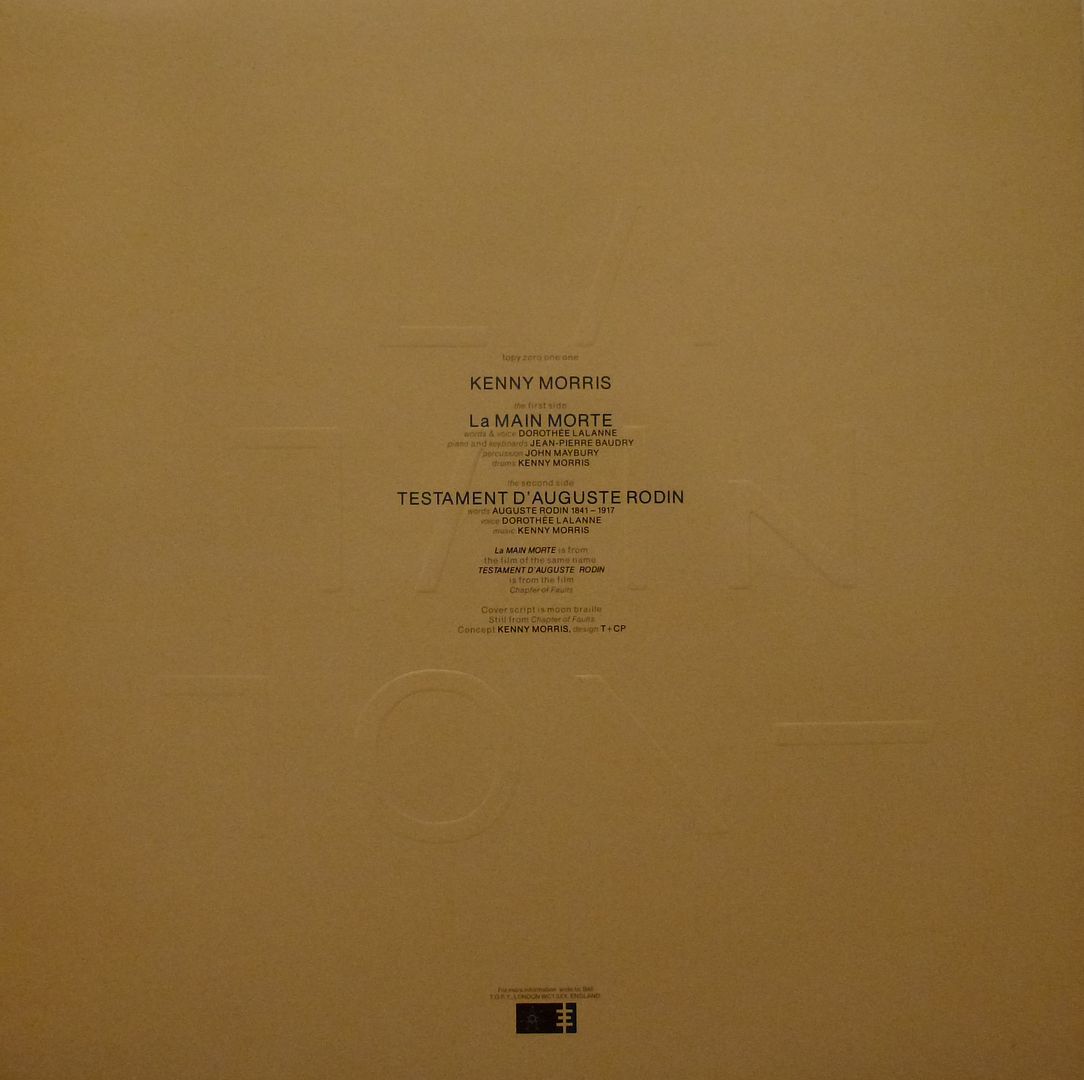
A release from 1987 on the Temple Records imprint. A poetic collaboration between musician Kenny Morris and the radical 1970’s writer Dorothée Lalanne, which works out very well. The two sound-scapes on each side of this 12″ record, are both soundtracks for the two films ‘La Main Morte’ and ‘Chapter Of Faults’. These are two tracks of spoken word, one written and read in English by French writer Dorothée Lalanne, and the other written by 19th century French sculptor Auguste Rodin, read in French, again by Dorothée Lalanne.
The artwork placed in the middle of both sides of the sleeve artwork is the front cover for the book “Silence” by Dorothée Lalanne and Loulou Picasso.
The winter solstice information has been gently removed from the whitegoddess website whilst a large moon hovers above Penguin Towers. The text on Kenny Morris has mainly been stolen from Wikki during the same moon’s orbit. The photograph below of Siouxsie and Kenny Morris lovingly scanned from Simon Barker’s A.K.A Berlin’s book ‘Punks Dead’.
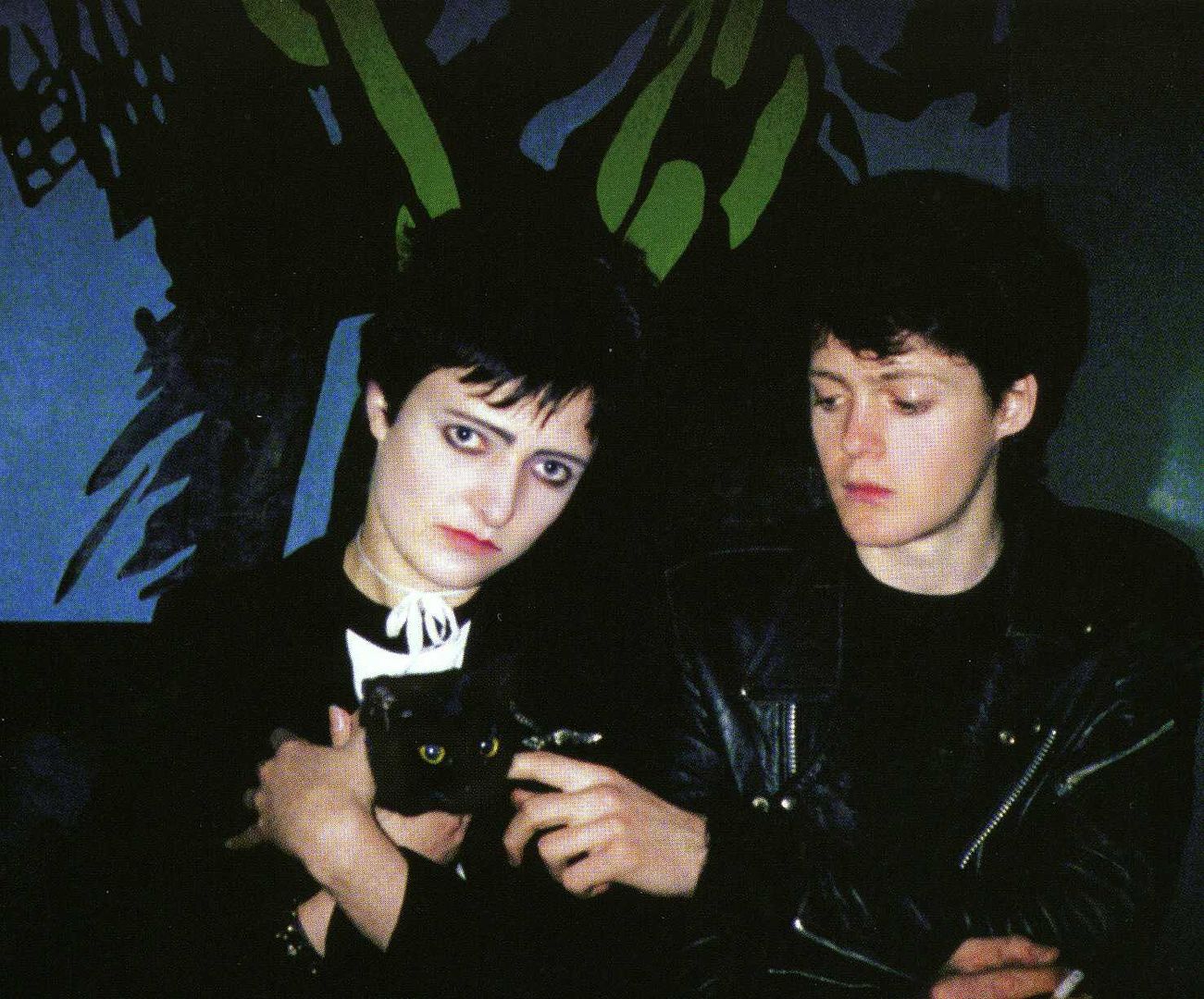
Kenny Morris was the first studio drummer of Siouxsie and the Banshees.
Morris attended St Ignatius College, Enfield, where he became a friend of future collaborator and film director John Maybury. Morris then attended Barnet College of Further Education. He also studied Fine Art and Film-making at North East London Polytechnic. He was attending Camberwell School of Arts and Crafts when he joined the band.
He was a member of Siouxsie and the Banshees from January 1977 until September 1979. He played on the albums ‘The Scream’ and ‘Join Hands’. He also co-composed the hit single ‘Hong Kong Garden’.
While the band sold out venues in London in early 1978, they still had problems getting the right recording contract that could give them “complete artistic control”. Polydor finally offered this guarantee and signed them in June. Their first single, ‘Hong Kong Garden’, featuring a xylophone motif, reached the Top Ten in the UK shortly after. In its review, the NME hailed it as “a bright, vivid narrative, something like snapshots from the window of a speeding Japanese train, power charged by the most original, intoxicating guitar playing I heard in a long, long time.”
The band released their debut album, ‘The Scream’, in November 1978. Nick Kent of NME said of the record: “the band sounds like some unique hybrid of the Velvet Underground mated with much of the ingenuity of Tago Mago-era Can, if any parallel can be drawn.” At the end of the article, he added this remark: “Certainly, the traditional three-piece sound has never been used in a more unorthodox fashion with such stunning results.”
The Banshees’ second album, ‘Join Hands’, was released in 1979 and included a version of ‘The Lord’s Prayer’. In Melody Maker Jon Savage described ‘Poppy Day’ as “a short, powerful evocation of the Great War graveyards” and Record Mirror described the whole record as “a dangerous and volatile work”. The Banshees embarked on a major tour to promote the album. A few dates into the tour in September, Morris and McKay left an in-store signing after an argument and quit the band. In need of replacements to fulfil tour dates, the Banshees’ manager called drummer Budgie, formerly with The Slits, and asked him to audition. Budgie was hired, but Siouxsie and Severin had no success auditioning guitarists. Robert Smith of The Cure offered his services in case they couldn’t find a guitarist (his group were already the support band on the tour), so the band held him to it after seeing too many “rock virtuosos”. The tour resumed in September and after the last concert, Smith returned to The Cure.
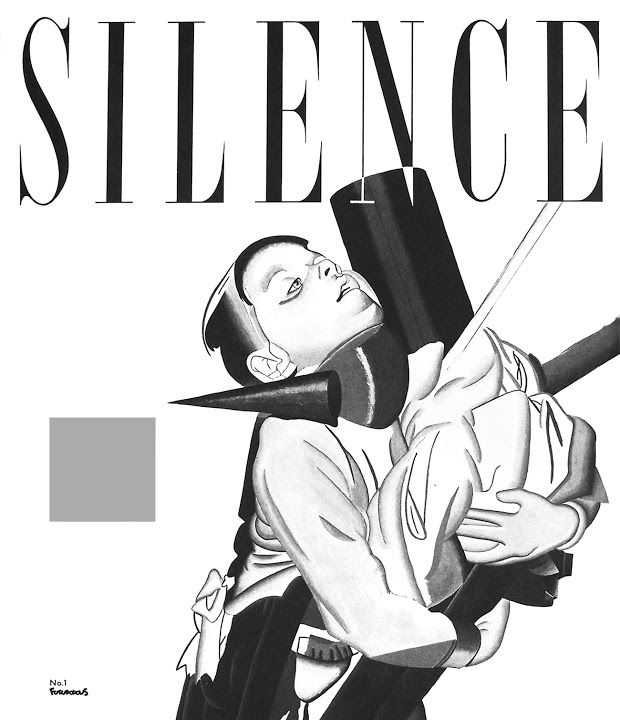
Almost a decade after leaving the Banshees, Morris worked as a drummer with Helen Terry and other musicians for live stage sets. He made the film and soundtrack ‘La Main Morte’, with narration by Dorothy Lalanne and music by Morris, John Maybury and Jean-Michelle Baudry. The EP released on Temple Records is the original sound track to the two short movies filmed by Kenny Morris. The first one titled ‘La Main Morte’ and the second one ‘Chapter Of Faults’ (where the artwork comes from). These are two tracks of spoken word, one written and read in English by French writer Dorothée Lalanne, and the other written by 19th century French sculptor Auguste Rodin and read in French by Dorothée Lalanne.
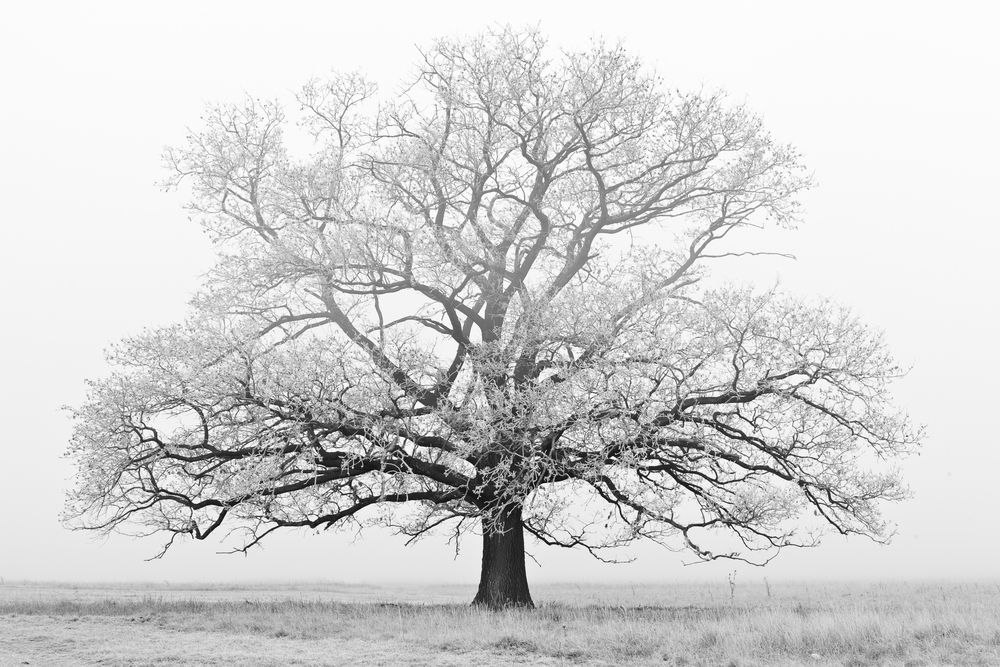
Yule: Winter Solstice – Dec 21st/22nd
The origin of the word Yule, has several suggested origins from the Old English word, geõla, the Old Norse word jõl, a pagan festival celebrated at the winter solstice, or the Anglo-Saxon word for the festival of the Winter Solstice, ‘Iul’ meaning ‘wheel’. In old almanacs Yule was represented by the symbol of a wheel, conveying the idea of the year turning like a wheel, The Great Wheel of the Zodiac, The Wheel of Life. The spokes of the wheel, were the old festivals of the year, the solstices and equinoxes.
The winter solstice, the rebirth of the Sun, is an important turning point, as it marks the shortest day, when the hours of daylight are at their least. It is also the start of the increase in the hours of daylight, until the Summer Solstice, when darkness becomes ascendant once more.
Cycle of the Year
Yule is deeply rooted in the cycle of the year, it is the seed time of year, the longest night and the shortest day, where the Goddess once again becomes the Great Mother and gives birth to the new Sun King. In a poetic sense it is on this the longest night of the winter, ‘the dark night of our souls’, that there springs the new spark of hope, the Sacred Fire, the Light of the World, the Coel Coeth.
Fire festivals, celebrating the rebirth of the Sun, held on the Winter’s Solstice can be found throughout the ancient world. The Roman festival of Saturnalia was held on the winter solstice, boughs of evergreen trees and bushes would decorate the house, gifts where exchanged and normal business was suspended. The Persian Mithraists held December 25th as sacred to the birth of their Sun God, Mithras, and celebrated it as a victory of light over darkness. In Sweden, December 13th was sacred to the Goddess Lucina, Shining One, and was a celebration of the return of the light. On Yule itself, around the 21st, bonfires were lit to honour Odin and Thor.
The festival was already closely associated with the birth of older Pagan gods like Oedipus, Theseus, Hercules, Perseus, Jason, Dionysus, Apollo, Mithra, Horus and even Arthur with a cycle of birth, death and resurrection that is also very close to that of Jesus. It can hardly be a coincidence that the Christians, also used this time of year for the birth of Christ, mystically linking him with the Sun.
That Yule is another fire festival, should come as no surprise, however unlike the more public outdoor festival of the summer solstice, Yule lends itself to a more private and domestic celebration. Yet like its midsummer counterpart, is strongly associated with fertility and the continuation of life. Here the Goddess is in her dark aspect, as ‘She Who Cuts The Thread’ or ‘Our Lady in Darkness’, calling back the Sun God. Yet, at the same time, she is in the process of giving birth to Son-Lover who will re-fertilise her and the earth, bringing back light and warmth to the world.